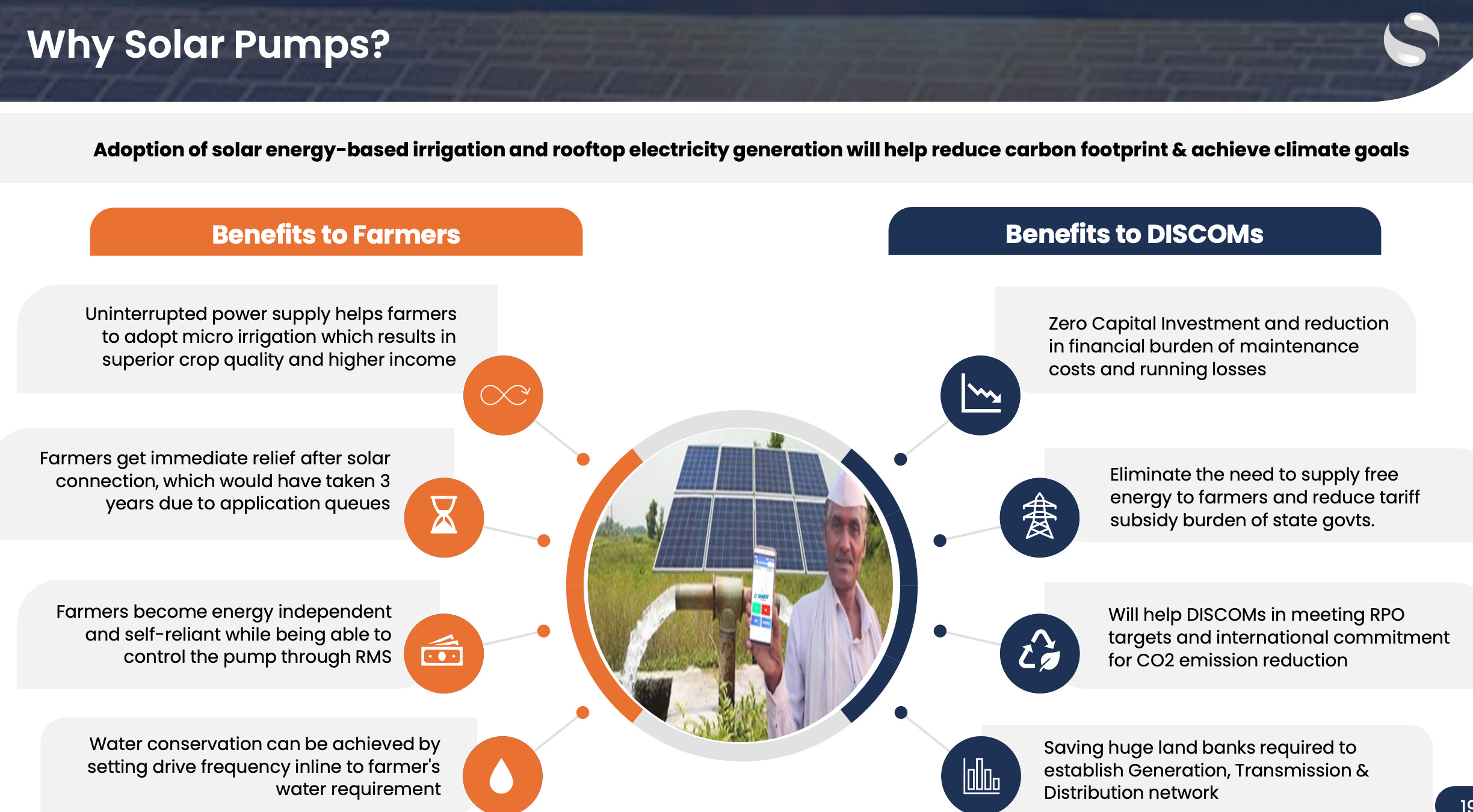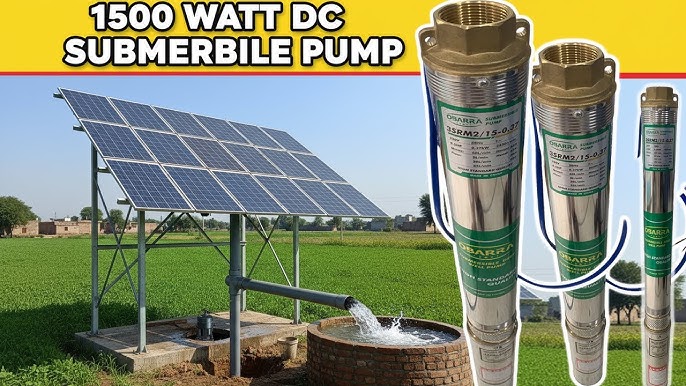Imagine cutting down your electricity bills while helping the environment at the same time. Sounds like a win-win, right?
If you rely on traditional water pumps, you might be spending more on electricity than you need to. But what if there was a smarter way to power your pumps—one that uses the sun’s energy instead of costly electricity? You’ll discover exactly how solar pumps can save your electricity, reduce your expenses, and make your daily life easier.
Keep reading to find out how making this simple switch can bring big benefits to you and your home.
Solar Pumps Basics
Solar pumps offer a smart way to save electricity and reduce costs. They use the sun’s energy to power water pumps. This method helps farmers, homeowners, and businesses access water without relying on the electric grid. Understanding the basics of solar pumps is key to seeing their benefits.
These pumps run on solar panels that convert sunlight into electricity. This clean energy source lowers electricity bills and cuts down on pollution. Learning how solar pumps work and the types available helps you choose the right system for your needs.
How Solar Pumps Work
Solar panels collect sunlight and turn it into electrical energy. This energy powers a motor connected to the pump. The pump moves water from wells, rivers, or tanks to where it is needed. Solar pumps work best in sunny areas with plenty of daylight.
The system does not need a battery if water is pumped during the day. Some setups include batteries to store energy for nighttime use. This makes solar pumps reliable and efficient for various water needs.
Types Of Solar Pumps
Two main types of solar pumps exist: submersible and surface pumps. Submersible pumps sit inside water sources like wells. They push water up to the surface. Surface pumps sit above ground and pull water from shallow sources.
Choosing the right type depends on water depth and volume needed. Both types use solar power to save electricity and reduce running costs. Each type fits different water supply needs and environments.

Credit: betatoalpha.substack.com
Electricity Savings
Solar pumps help save a lot of electricity by using sunlight instead of power from the grid. This switch lowers the use of electrical energy from traditional sources. It reduces the strain on power plants and cuts down on energy costs.
Many farmers and businesses choose solar pumps because they offer a way to run water pumps without high electricity bills. This choice also supports a cleaner environment by using renewable energy.
Reducing Grid Dependence
Solar pumps work mainly on solar power, reducing the need for grid electricity. This means less reliance on public power supply. During peak hours, users do not worry about power cuts. Solar pumps provide steady water flow without interruption.
This independence helps rural areas where electricity is unstable. Solar energy keeps pumps running even in remote places. It makes water access reliable and consistent.
Lowering Energy Bills
Using solar pumps cuts down monthly electricity costs significantly. The sun’s energy is free, so there is no charge for fuel or electricity. Solar pumps only need a one-time investment and low maintenance.
Users save money over time by avoiding high electric bills. This saving helps farmers and businesses invest in other needs. Solar pumps offer a cost-effective way to manage water without extra energy expenses.
Efficiency Boost
Solar pumps offer a clear efficiency boost by using energy smartly. They reduce electricity waste and improve water delivery. This makes them ideal for farms and homes aiming to save power and cost. The technology behind solar pumps focuses on getting the best output with less energy.
Efficiency is key. It means the pump works well without using extra electricity. Solar pumps achieve this through smart design and control systems. These features help match the pump’s work with the power available from the sun.
Optimizing Pump Performance
Solar pumps are designed to run only when needed. This avoids wasting energy on unnecessary work. Sensors monitor water levels and pressure to keep the pump running smoothly. The pump adjusts its speed to match the water demand. This saves power and extends the pump’s life. Proper sizing of the pump also plays a big role. A right-sized pump uses less electricity and delivers just the right amount of water.
Smart Controls And Automation
Smart controllers help solar pumps work more efficiently. They turn the pump on and off based on sunlight and water needs. Automation systems avoid running the pump during low solar power times. This reduces electricity use and prevents damage. Remote monitoring allows users to track pump status easily. It helps fix problems quickly and keeps the system efficient. These controls ensure the pump uses only the energy it needs.

Credit: www.youtube.com
Cost Benefits
Solar pumps reduce electricity costs significantly. They use sunlight to power water pumps, cutting down electricity bills. These pumps require less maintenance and last longer than traditional pumps. Investing in solar pumps can save money over time.
Long-term Savings
Solar pumps lower energy expenses by using free solar power. There is no need to pay for fuel or grid electricity. Over several years, these savings add up. The initial cost is recovered through reduced utility bills. Solar pumps also have fewer breakdowns, saving repair costs.
Government Incentives
Many governments offer incentives for solar pump installation. These include rebates, tax credits, and subsidies. Such support lowers the upfront cost. It encourages farmers and businesses to switch to solar energy. These incentives make solar pumps more affordable and attractive.
Installation Tips
Proper installation is key to saving electricity with solar pumps. It helps the system work well and last longer. Follow these simple tips to get the best results.
Site Assessment
Check the place where you want to install the solar pump. Look for direct sunlight for most hours of the day. Avoid shady spots near trees or buildings. Measure the water source and distance to the pump. This helps to choose the right size and type of pump.
Choosing The Right System
Select a solar pump system that fits your water needs. Small farms need less power, so a smaller pump works fine. Bigger farms or gardens need bigger pumps. Match the pump’s power with the solar panel capacity. This balance saves electricity and keeps water flowing steadily.
Environmental Impact
Solar pumps offer a positive environmental impact by reducing reliance on traditional energy sources. They use clean energy from the sun, which helps protect the earth. These pumps support eco-friendly water use and cut down harmful emissions. Understanding their environmental benefits highlights why solar pumps are a smart choice for many.
Reducing Carbon Footprint
Solar pumps do not burn fossil fuels. They run on sunlight, a clean and renewable energy source. This reduces carbon dioxide released into the air. Lower carbon emissions help fight climate change. Using solar pumps means less pollution and a healthier planet.
Sustainable Water Management
Solar pumps promote careful use of water resources. They provide reliable water supply without wasting energy. Farmers and communities can irrigate crops efficiently. This supports long-term water availability and soil health. Sustainable water management protects the environment and saves energy.

Credit: www.poposoapsolar.com
Frequently Asked Questions
How Do Solar Pumps Reduce Electricity Consumption?
Solar pumps use sunlight to power water pumping, eliminating the need for grid electricity. This reduces energy bills and lowers reliance on fossil fuels, making water pumping eco-friendly and cost-effective.
Are Solar Pumps More Energy-efficient Than Traditional Pumps?
Yes, solar pumps convert solar energy directly into mechanical energy. They operate only when the sun is available, ensuring minimal energy waste and higher efficiency compared to electric pumps running continuously.
Can Solar Pumps Work During Cloudy Or Rainy Days?
Solar pumps depend on sunlight, so performance drops on cloudy or rainy days. However, battery storage or hybrid systems can provide backup power, ensuring consistent operation even without direct sunlight.
What Are The Environmental Benefits Of Using Solar Pumps?
Solar pumps reduce carbon emissions by replacing fossil fuel-based electricity. They promote sustainable water management and help conserve natural resources, contributing to a cleaner and greener environment.
Conclusion
Solar pumps cut down on electricity use and lower bills. They run on sunlight, which is free and clean. No need to worry about power outages or high energy costs. Solar pumps help farmers and homes save money every day.
They also protect the environment by reducing pollution. Choosing solar pumps supports a greener, brighter future. Easy to install and low on upkeep, they fit many needs. Switching to solar pumps makes sense for saving power and money. Simple, smart, and sustainable.
